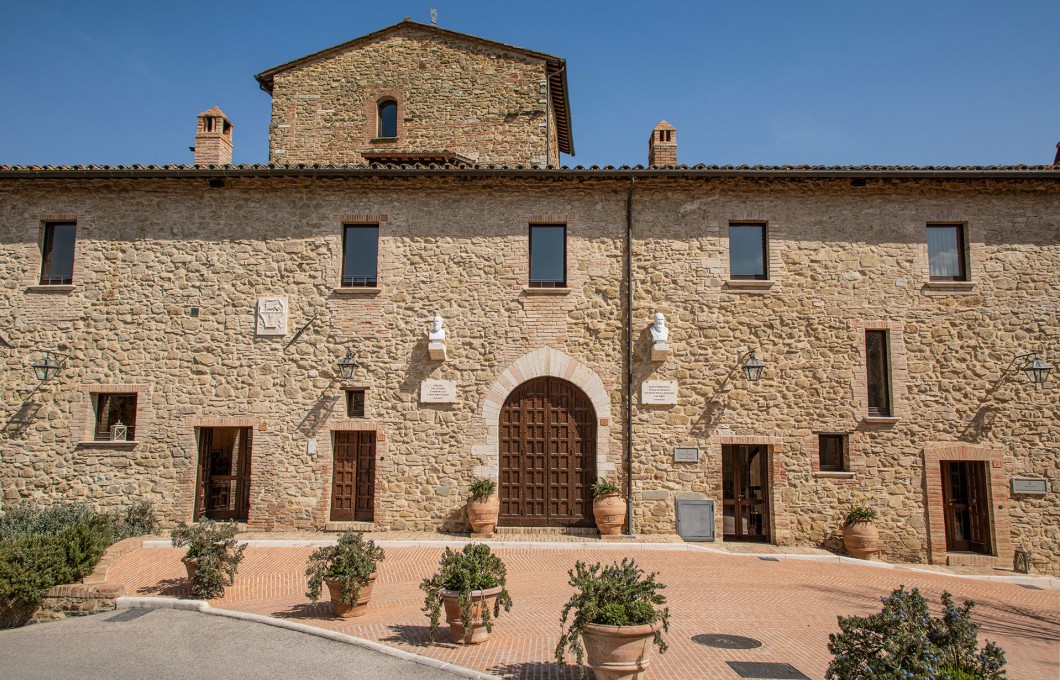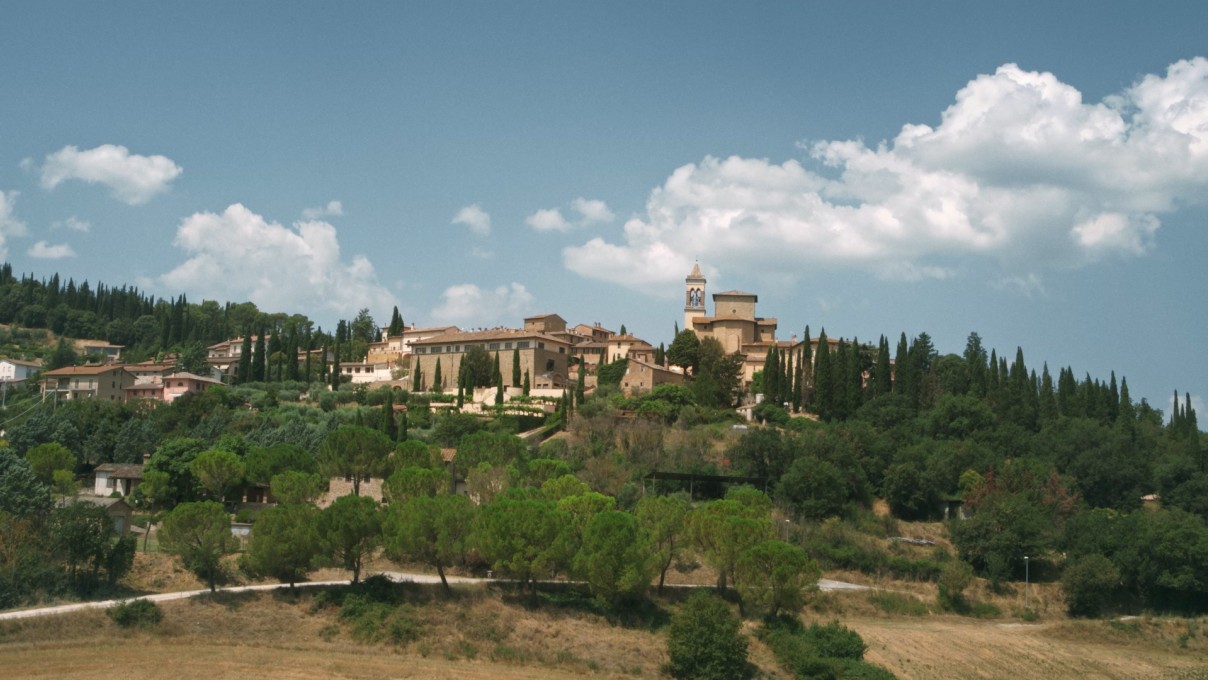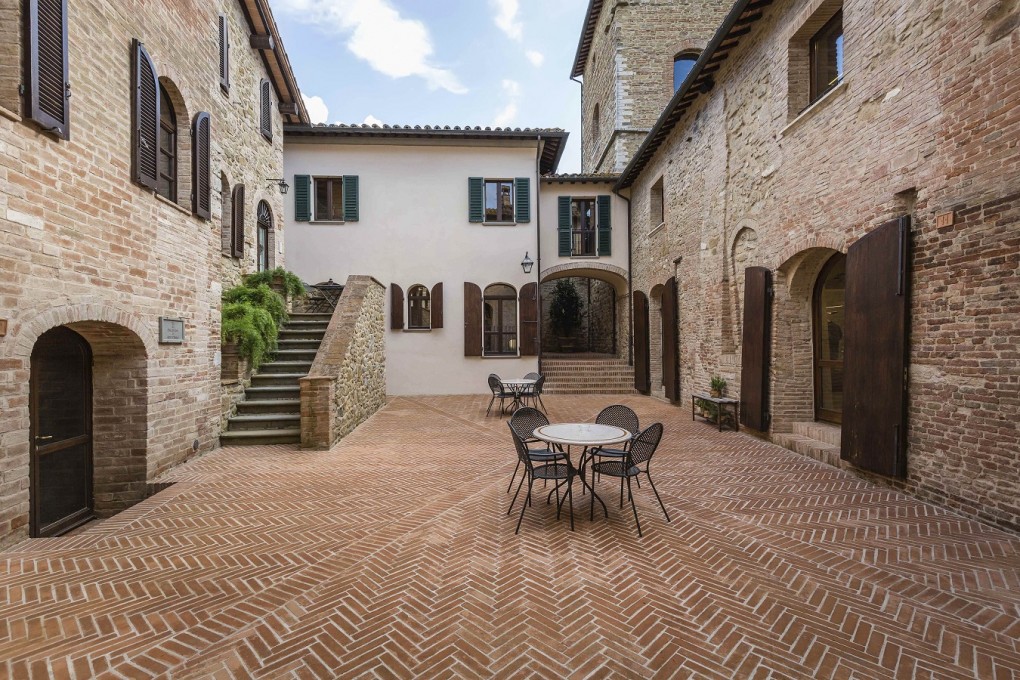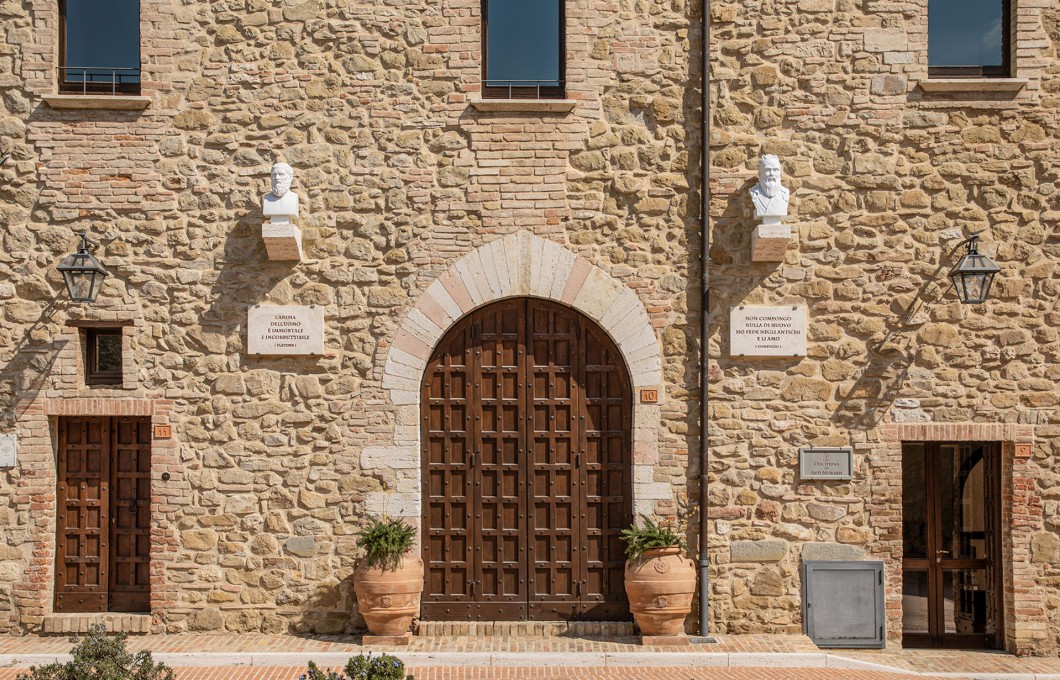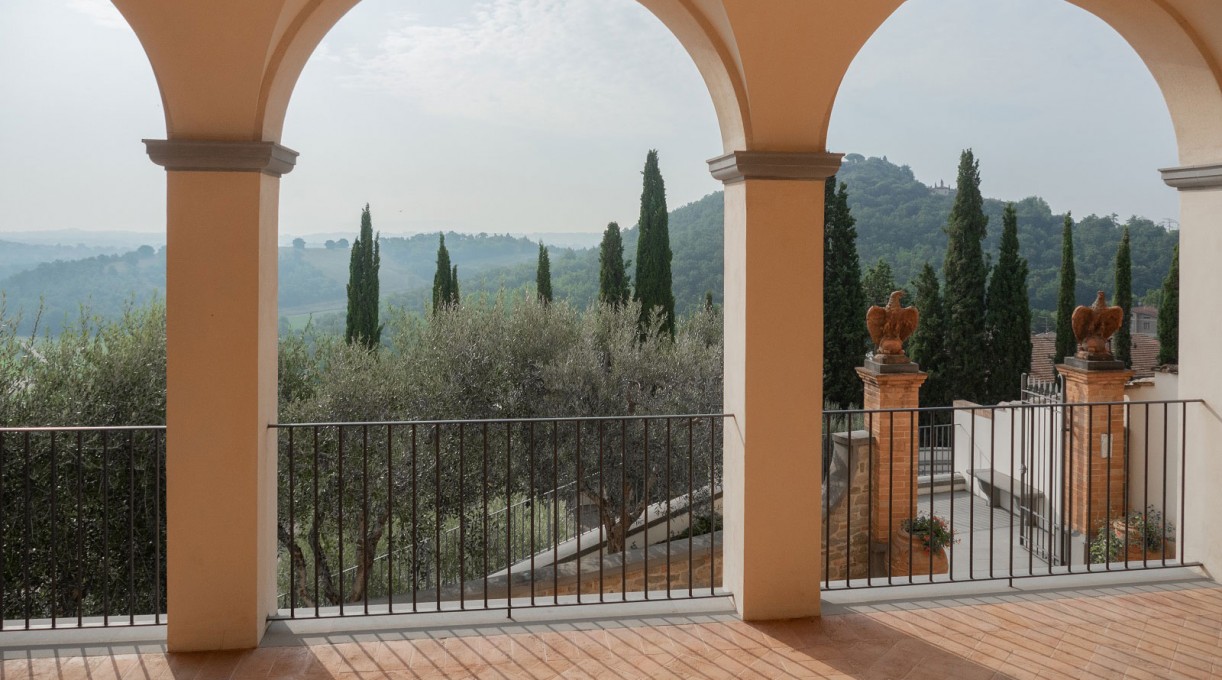The Hamlet of Harmony
The hamlet of Solomeo is home to places that represent special stages in a journey through history, culture, art, nature and landscapes.
From the Castle to the Cucinelli Theatre, from the Church of San Bartolomeo to the Forum of the Arts, from the Amphitheatre to the Philosophers' Garden to the Aurelian Neohumanistic Academy: each place is the perfect expression of the role it plays, reflecting its unique personality.
The Castle
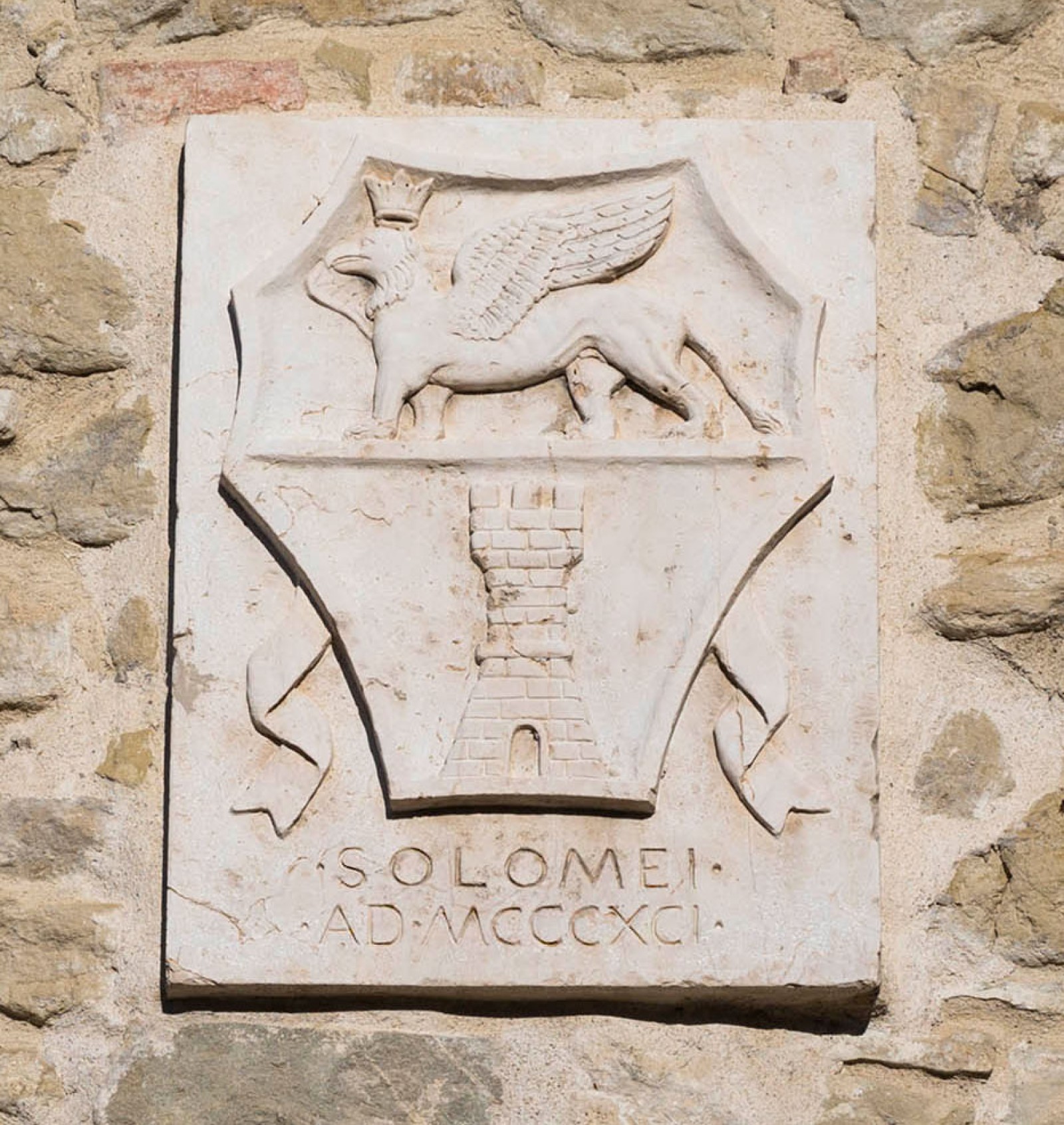
The Castle of Solomeo is the ancient heart of the hamlet. Construction began at the end of the 12th century for defensive purposes, and this building has undergone delicate redevelopment work along with the entire historic part of the hamlet.
Commissioned and implemented by the Cucinelli family, the restoration of this central area, which they like to call the "acropolis", began in 1985 and continued for several years, respecting the genius loci and the historical, architectural and landscape identity of the place.
Today, the Castle of Solomeo perfectly reflects the memory and ancient roots of the hamlet, and coexists harmoniously with the surrounding environment.
The Church of Saint Bartholomeo
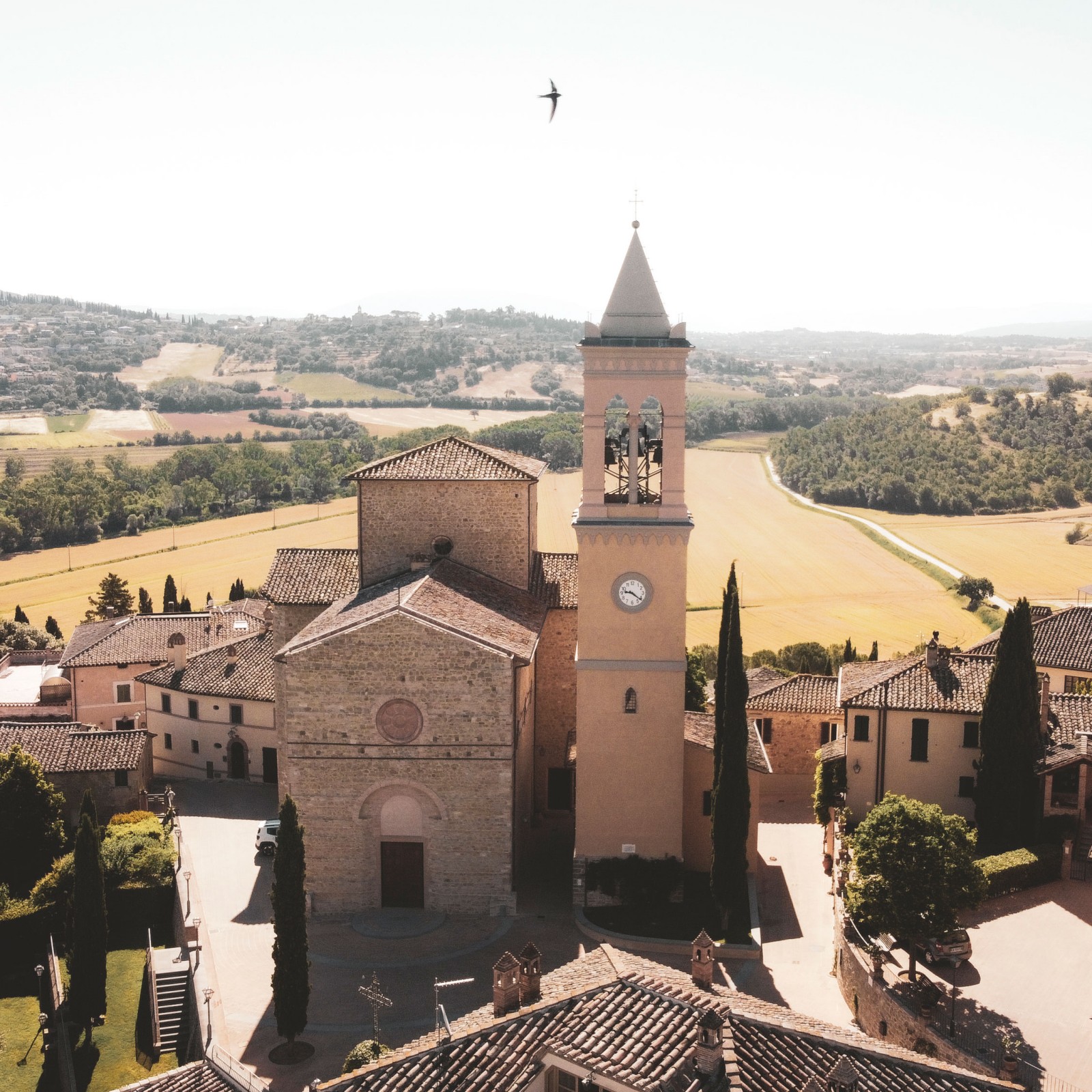
The Church of San Bartolomeo is one of the oldest presences in the hamlet. A fascinating living testimony of the religious history of the place, this building stands in the heart of Solomeo and, thanks to its elevated position, embraces the entire valley with its gaze.
Founded in the 12th century, the church was rebuilt in the 1700s and, finally, enlarged during the 19th century.
The interior holds rich decorations and a precious 18th-century organ, the Gonfaloncino (banner) depicting the Virgin and Child between Ss Monica and Bartholomew, and an eighteenth-century wooden Crucifixion.
Over the last decade, restoration and consolidation works have brought to light the original late nineteenth-century façade in simple stone characterized by a central terracotta rose window.
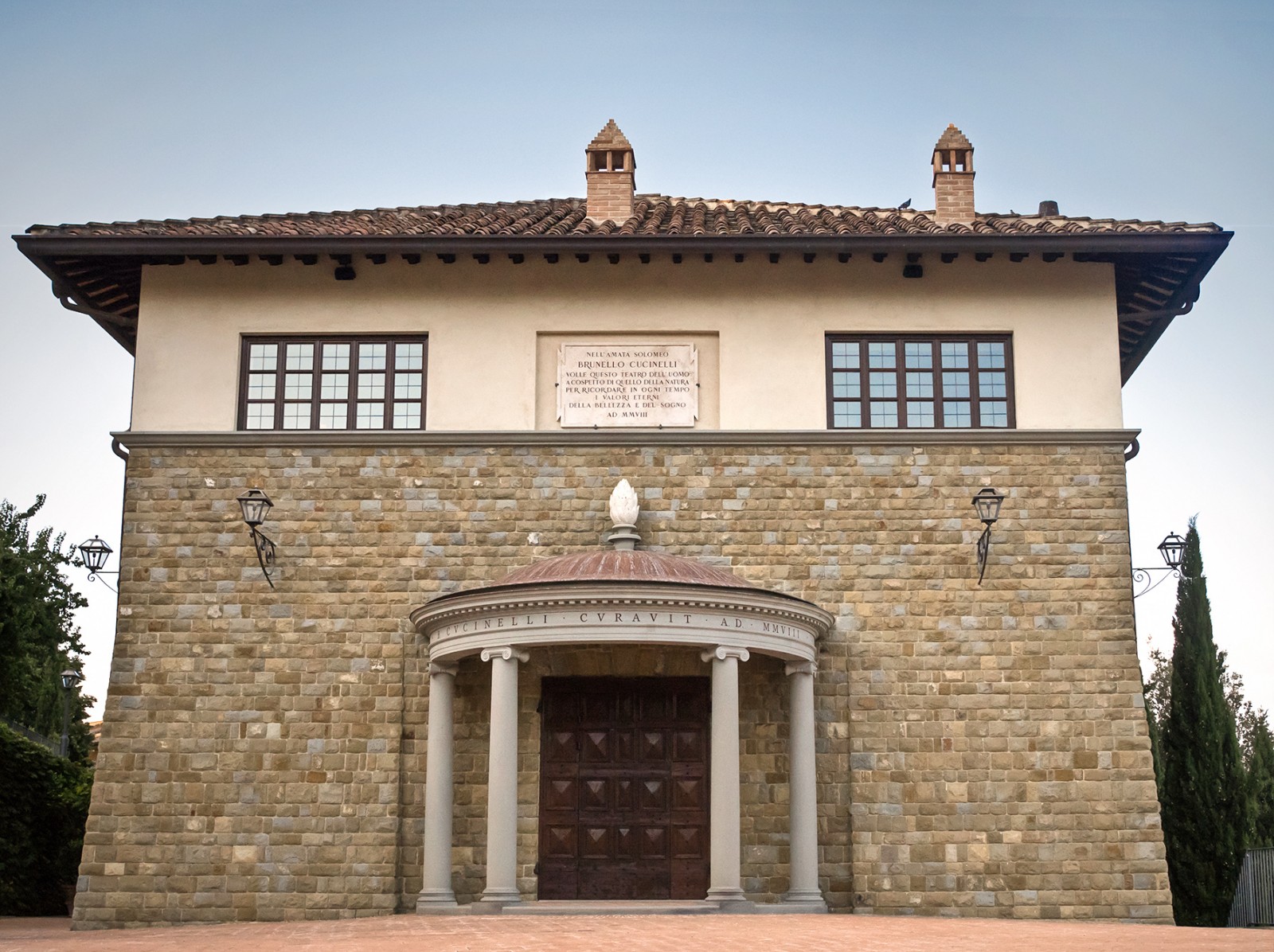
The Cucinelli Theatre is like a secular temple dedicated to the dissemination of culture and, as can be read on the plaque affixed to the walls of the main façade, it stemmed from the desire to give shape to the “eternal values of beauty and dreams”.
The Renaissance echo of the architecture, modelled on the Parma and Sabbioneta theatres, emerges decisively. A curvilinear pronaos with Ionic columns welcomes visitors and leads them inside.
With the stalls, the steps and the upper gallery forming its arrangement, the interior is dominated by the elegant juxtaposition that harmonizes the high oak wood trusses with the light tones of the seats and the stage.
Modern and versatile in structure, the theatre has been designed to adapt to different scenic needs, offering optimized acoustics thanks also to the choice of soundproofing materials. The back wall is equipped with a door that can be opened, allowing the landscape to become part of the scene.
Inaugurated in 2008, the Cucinelli Theatre hosts a rich and varied program every year with drama, dance and music performances.
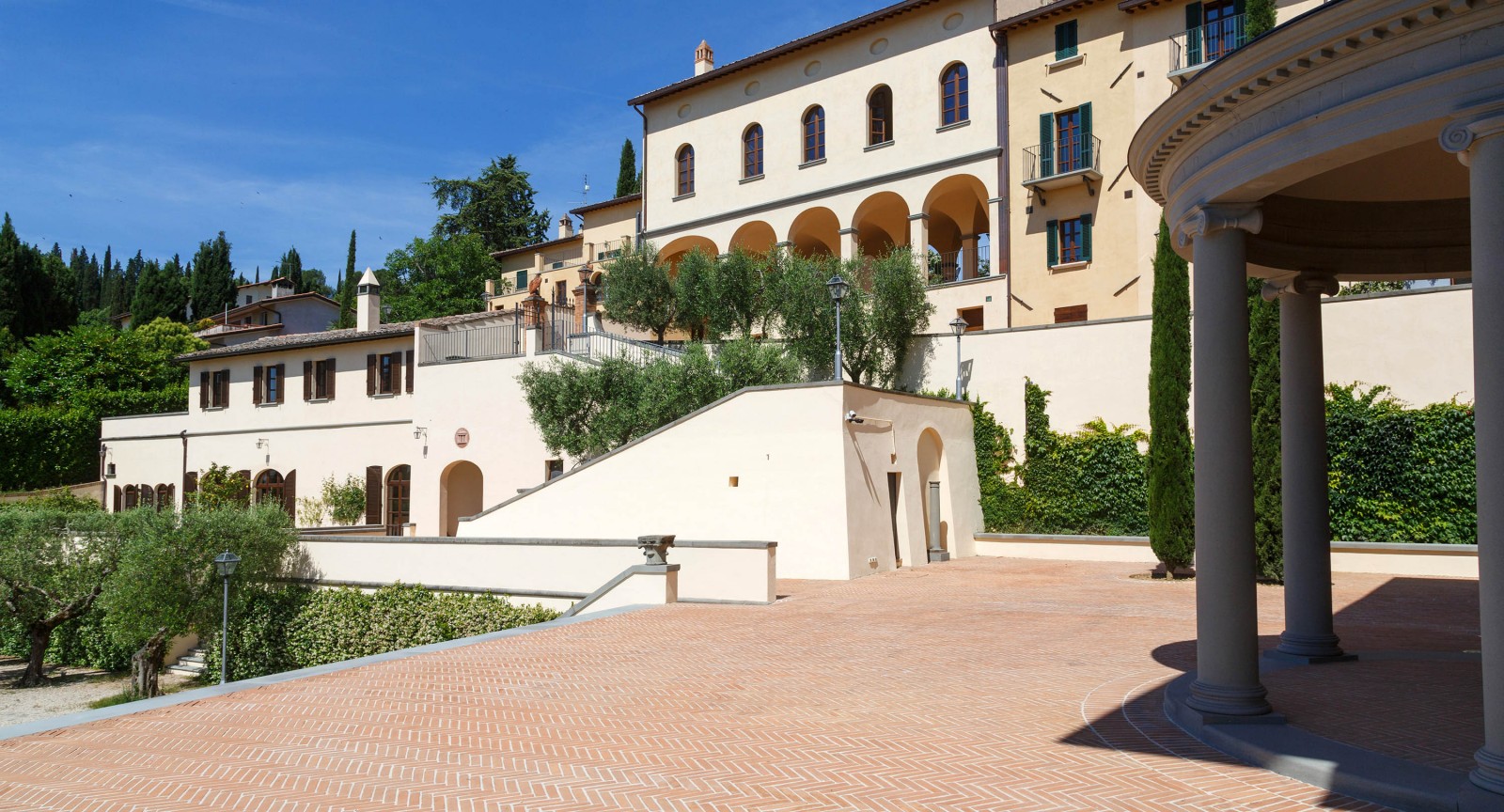
Designed in 2001, the Forum of the Arts has the physiognomy of a humanistic citadel and appears as a constellation of spaces and architectures, like the theatre that forms part of it, dedicated to secular culture.
In addition to the theatre itself, this area is home to the Amphitheatre, the Philosophers’ Garden and the Neohumanistic Aurelian Academy.
Taking its inspiration from the role it once used to play, the Forum is an open space, surrounded by buildings on a human scale interspersed with a harmonious natural itinerary, passing grape pergolas, fountains and fragrant rose gardens like words in poetic speech about architecture and landscapes.
Amphitheatre
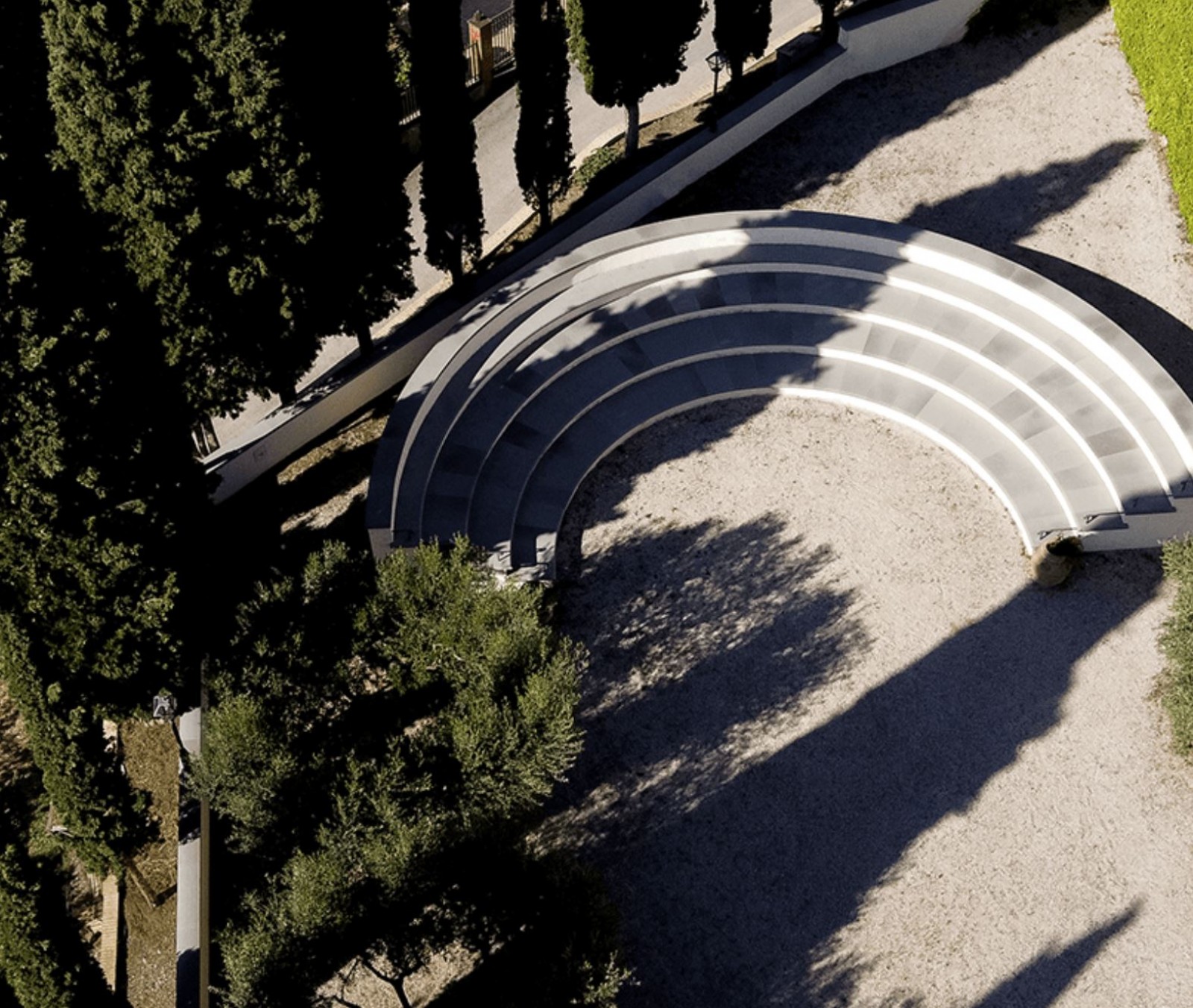
With its characteristic, classically-inspired oval design, the Amphitheatre area is surrounded by a hilly wooded landscape and extends to the entrance to the Cucinelli Theatre.
The architecture has been designed to create a space that is the summer version of the theatre, mirroring it in terms of design. During the summer, this is where Villa Solomei Festival concerts and the “Settima Arte” film festival are held.
The Philosophers' Garden
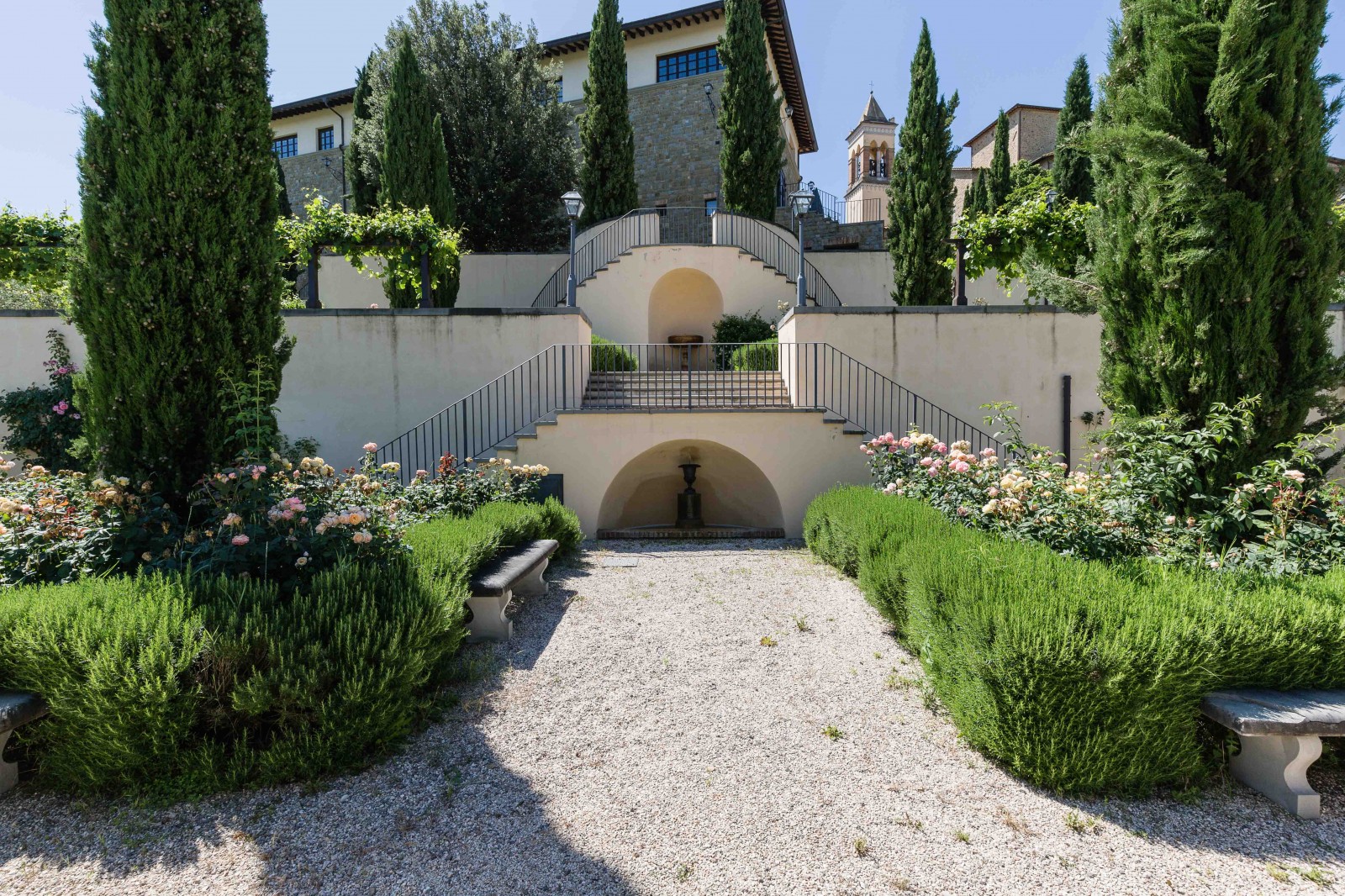
Located in the lower part of the Forum of the Arts, almost as if to welcome all visitors, the Philosophers’ Garden, a model Italian-style garden, represents an intimate, contemplative space, overlooking the green valley that stretches between Solomeo and San Mariano.
Characterized by the presence of green terraces, evergreen flower beds, flowering plants, shrubs and trees typical of Mediterranean scrub, the Garden is dedicated to the poetic contemplation of nature and is a place open to all. An invitation to stop, reflect and admire the view and the surrounding landscapes.
The Aurelian Neohumanistic Academy
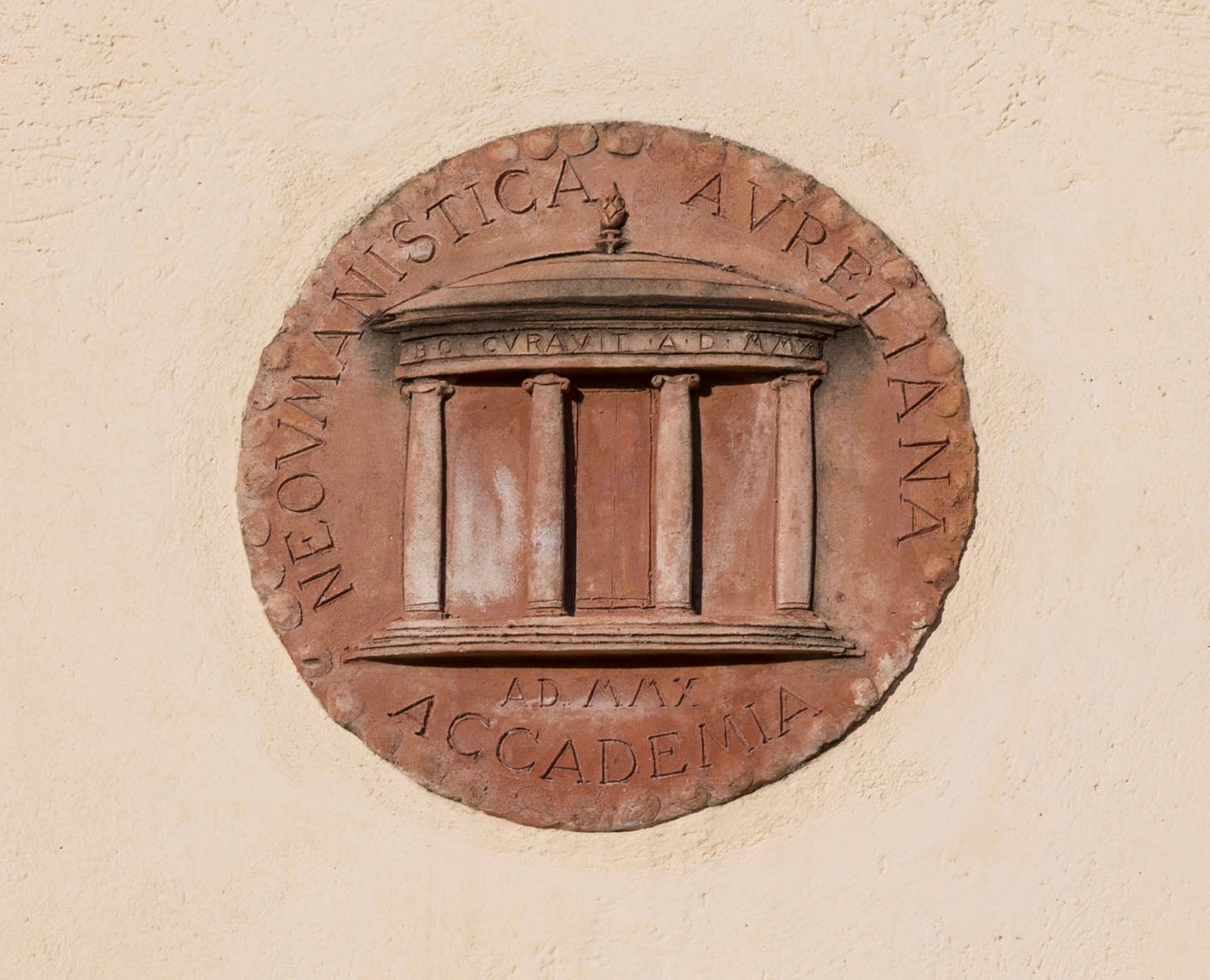
The Aurelian Neohumanistic Academy is housed in a distinctive Renaissance-style building, which is also home to the Brunello and Federica Cucinelli Foundation, created by the family for the promotion and care of human values.
In this bright, inspired environment, where symposia of art and culture and even social gatherings are held, we can also find the Aurelian Neohumanistic Library, especially dedicated to the Theatre.
Here, among ancient and modern books, unpublished editions and valuable volumes, we find the works of the greatest thinkers of the past, from Plato to Kant, via Marcus Aurelius, Pico della Mirandola and Giordano Bruno.
The collection also includes numerous texts by contemporary international philosophers, as well as classical authors of Western and oriental literature.
Like all the places that are part of the Forum of the Arts, the library is also a space open to all, devoted to the promotion of culture in all its forms.


